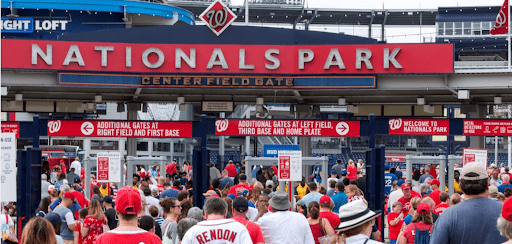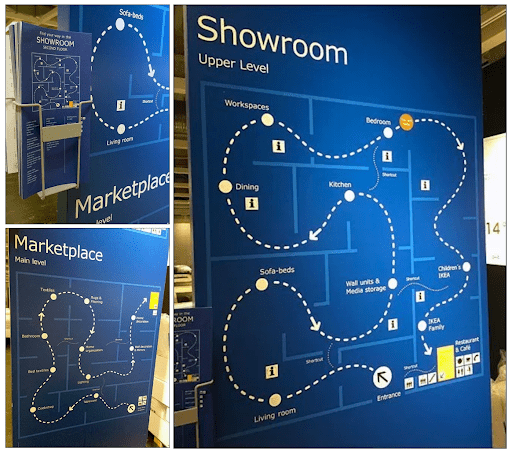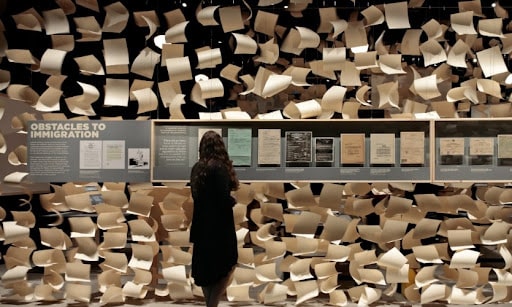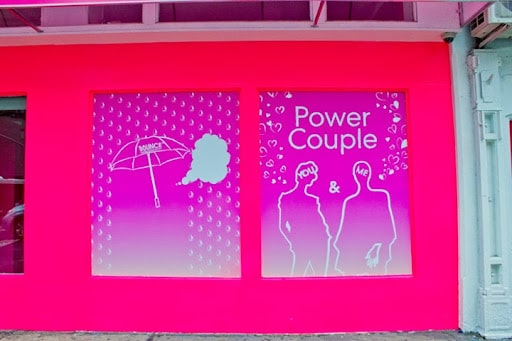4 Types of Environmental Graphic Design
Environmental graphic design, or how you organize a space, can have a huge impact on how people experience your brand. Through branding, wayfinding, exhibition, and interactive experiences, you can create a positive atmosphere for visitors.
Environmental graphic design involved graphic design, architecture, art, lighting, and landscape design to create setting.
It’s used to enhance your audience’s experience as they move about a space — whether that’s for an event, your office headquarters, a school, or even a sports venue.
This can help you connect your company’s brand and culture by creating a positive atmosphere that helps people feel productive and engaged.
Here are 4 types of environmental graphic design that you can incorporate into your space.
Need help selecting a company?
Based on your budget, timeline, and specifications we can help you build a shortlist of companies that perfectly matches your project needs. Get started by submitting your project details.
4 Types of Environmental Graphic Design
- Branding
- Wayfinding
- Exhibition
- Interactive Experience
1. Branding
Environmental graphic design can be used to help brand your business. By adding design elements that emphasize your brand, you can create a positive atmosphere that keeps people engaged.
For businesses, this can help with recruiting by making your potential hires more comfortable. It can also promote your business to customers or partners that walk into your store. However, there are other applications as well.
Imagine walking into a baseball stadium, but there isn’t anything on the walls. Most big stadiums include graphics portraying the team or mascot. If anything, they at least highlight the team’s colors. It’s part of what makes the home-game experience.

Source: Goodwin House
Nationals Park, where the Washington Nationals play, does just that — by adding team logos and colors throughout the stadium, they add to the atmosphere of a home game.
2. Wayfinding
Having a well-organized space makes it easier for people to navigate their environment.
Wayfinding refers to how people figure out where to go.
By including graphics in your space, you can enhance the flow of how people move from about the room and find where they need to go.
Features such as product signs, bathroom signs, and arrows all help potential customers navigate your space, which can improve their experience and increase sales.
Although their stores are massive, Ikea includes maps and arrows to help their customers move around the store without any issues.

Source: Lis653
As an international corporation, they’re known for using pictures so anyone who speaks any language will know where to go without translations. By creating consistency, they follow best graphic design practices for corporations.
They also use this design to showcase all of their products. Customers must follow the map in order to get to the next section of the store and make it to an exit. As such, they must pass by all of Ikea’s products, making them more likely to make additional purchases.
3. Exhibition
An exhibition is a public display, such as an art museum or trade show. In these environments, graphic design can help you relay information to your visitors.
To create a truly unique experience that draws in visitors and helps them feel connected to your message, your displays need to be purposeful.
Simple placards with basic information about a historical object or classical art simply doesn’t do it anymore. Instead, designers play with other environmental design elements to help viewers connect with the stories they’re trying to tell.
For example, this exhibit, Against the Odds: American Jews & the Rescue of Europe’s Refugees 1933–1941, uses several unique design elements to showcase how European Jews overcame obstacles to evade the Nazis leading up to World War II.

Source: SEGD
Here, they use curled cardstock to symbolize the bureaucracy surrounding immigration laws. This adds to the ambiance of the exhibit and helps viewers understand the magnitude of these events.
At the same time, projections show immigrants on a boat that turn red over time, showcasing the darkness of this time in history.
4. Interactive Experience
Like a well-designed website, the environment you create should be engaging. And nothing is more engaging than an interactive experience.
By giving your audience control, letting them make decisions, or allowing them to touch certain elements of your environment, you can create a memorable experience that they will never forget.
Digital tools like augmented and virtual reality (AR/VR) allow users to interact directly with elements of the space they’re in.
One way you can implement this into your environmental design is to add touchpoints throughout your space. When your audience engages with each of these touchpoint — maybe they touch a button — something happens.
You can also engage your audience by creating a space that they want to post about on social media.
With about 4.48 billion social media users worldwide, the best way to reach a wide audience is to grow your social media following. One way is to create an environmental graphic design that encourages people to post online.
Recent studies have shown that people are 10 times more likely to share their experience on social media when a branded space includes a unique graphic design.
Back in 2017, Beautyblender launched it’s new Bounce Liquid Whip Long Wear Foundation. To create buzz, they created two murals that encouraged people to take pictures in front of it.

Source: BizBash
To make sure that it was also an effective advertisement, they used their signature color — hot pink — and included the brand’s name in the mural.
Then people were able to pose, take pictures, and post them online.
Environmental Graphic Design Helps Customers Connect With Your Brand
Environmental graphic design uses elements of design, art, lighting, and architecture to create unique experiences for your audience.
By adding visuals to your space, you can help your audience find where they’re going. Additionally, graphics can help your customers connect with your brand.
At the same time, interactive elements will engage your audience and leave a lasting impression.
Need help selecting a company?
Based on your budget, timeline, and specifications we can help you build a shortlist of companies that perfectly matches your project needs. Get started by submitting your project details.